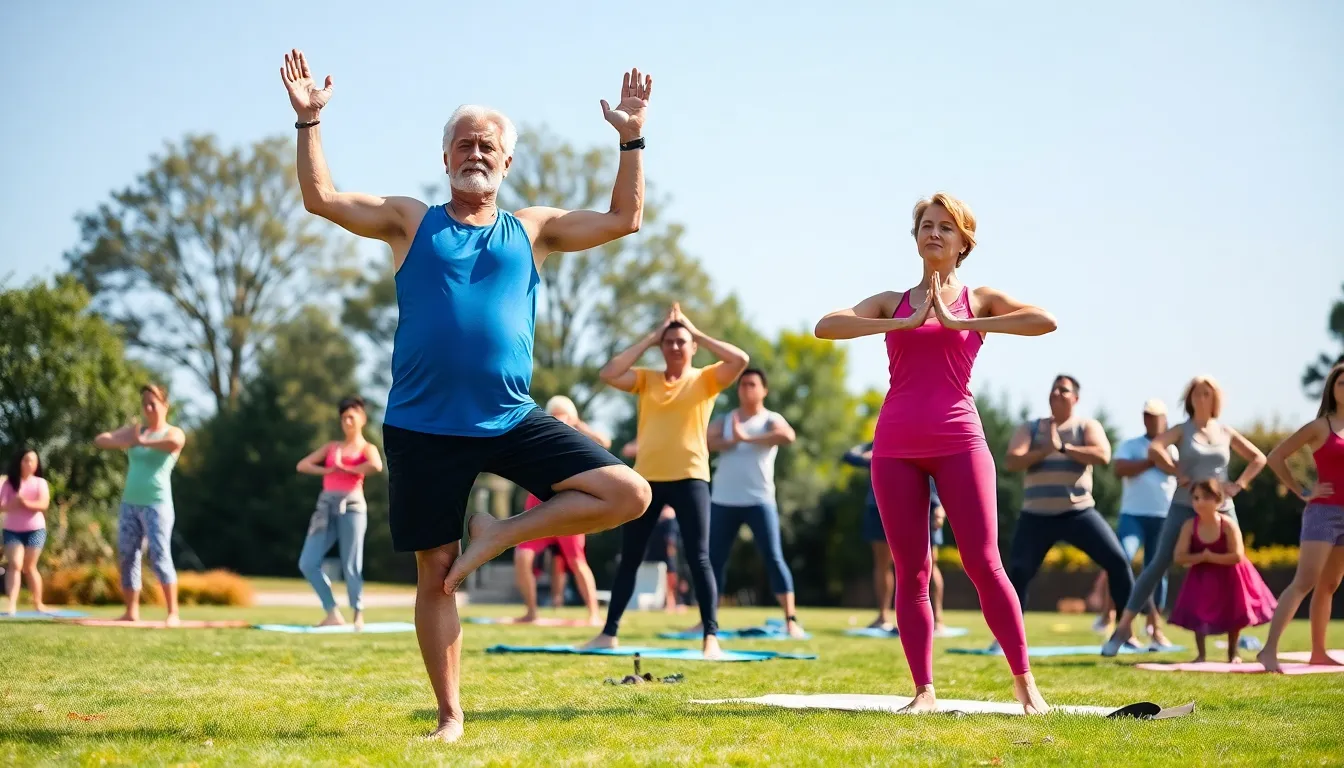Table of Contents
ToggleIn a world that often feels like a circus, juggling work, family, and personal time can leave anyone feeling like a clown. Balancing activities isn’t just a trendy buzzword; it’s a necessity for maintaining sanity and happiness. Imagine a life where you can savor that morning coffee without rushing to the next meeting or enjoy quality time with loved ones without the nagging guilt of unfinished tasks.
Understanding Balancing Activities
Balancing activities play a crucial role in achieving harmony among work, family, and personal time. Effective balance fosters mental well-being and enhances overall happiness.
Importance of Balance in Daily Life
Maintaining balance in daily life reduces stress and improves productivity. A structured routine that allocates time for work, family, and self-care supports mental clarity. Individuals thrive when they prioritize important tasks while allowing time for relaxation. Quality experiences, such as enjoying hobbies or family meals, bring fulfillment. Establishing boundaries further promotes enjoyable moments, enhancing interpersonal relationships.
Types of Balancing Activities
Various activities help individuals achieve balance. Physical exercise, such as walking or yoga, boosts energy and alleviates stress. Engaging in hobbies, whether painting or gardening, provides creative outlets. Participating in social events fosters connections with others. Mindfulness practices like meditation reduce anxiety and promote mental focus. Scheduling regular family time enhances bonds and creates lasting memories.
Benefits of Engaging in Balancing Activities

Balancing activities significantly enhance overall well-being. These activities contribute to both physical and mental health in various ways.
Physical Health Advantages
Engaging in balancing activities elevates physical fitness. Regular exercise, such as yoga, strengthens core muscles and improves flexibility. Participating in social activities fosters movement while building connections with others. Increased physical activity boosts cardiovascular health and enhances stamina. Research indicates that those who prioritize exercise report reduced risk of chronic illnesses, like heart disease or diabetes. Maintaining a healthy weight becomes easier with consistent activity, leading to a more vibrant lifestyle. Practical exercises that incorporate balance can help prevent falls, especially in older adults, promoting independence and self-confidence.
Mental Health Benefits
Balancing activities enhance mental clarity and emotional stability. Mindfulness practices, such as meditation and breathing exercises, lower stress levels and promote relaxation. Engaging in hobbies provides an outlet for creativity and self-expression, contributing to improved mood. Connecting with friends during social gatherings reduces feelings of loneliness and isolation. Evidence shows that individuals who engage in leisure activities experience lower rates of anxiety and depression. Establishing routines that prioritize mental health leads to better emotional regulation, allowing individuals to handle daily stressors more effectively. Balancing daily responsibilities with enjoyable pursuits nurtures a sense of satisfaction and fulfillment.
How to Incorporate Balancing Activities into Your Routine
Incorporating balancing activities into daily routines significantly boosts overall well-being. These activities can fit seamlessly into busy lifestyles.
Easy Balancing Activities for Beginners
Start with simple activities that promote balance and relaxation. Walking for 30 minutes offers both physical and mental benefits. Practicing deep breathing exercises can help reduce stress and improve focus. Exploring a new hobby, like painting or gardening, fosters creativity while providing a sense of accomplishment. Even spending time with friends or family can enhance social connections and overall happiness. Prioritize these activities during free moments to gradually develop a routine that supports mental well-being.
Advanced Balancing Techniques
For those looking to enhance their balance, advanced techniques can elevate the experience. Yoga practices, which focus on both strength and flexibility, improve physical health and mindfulness. Incorporating challenging workouts, like martial arts or dance classes, engages both the body and mind, boosting mood and energy levels. Setting boundaries at work can help allocate time for these activities. Utilizing time management strategies, like the Pomodoro Technique, balances productivity with personal time. Scheduling regular social gatherings enhances emotional connections, ensuring a fulfilling lifestyle.
Common Mistakes to Avoid
Balancing activities can enhance well-being, but several common mistakes can hinder this process. Awareness of these pitfalls promotes a healthier lifestyle and encourages better outcomes.
Overtraining and Injuries
Overtraining often leads to physical injuries that derail fitness progress. Engaging in excessive workouts without adequate recovery causes fatigue and increases injury risk. Signs of overtraining include persistent soreness and decreased performance, which often indicate that rest is necessary. Prioritizing rest days allows the body to recover and adapt to training loads. Heed the warning signs and adjust workout intensity to maintain balance. Adding variety to workout routines can also prevent boredom while safeguarding against overuse injuries.
Neglecting Other Aspects of Fitness
Focusing solely on one aspect of fitness, such as weight lifting or cardio, neglects the importance of a well-rounded approach. Disregarding flexibility and mobility can lead to imbalances and decreased performance. Engaging in diverse activities ensures growth in strength, endurance, and flexibility. Incorporating stretching, yoga, or pilates facilitates a greater range of motion and prevents injuries. Emphasizing all components of fitness fosters holistic health and well-being. Balance in fitness routines enhances overall performance, benefitting both body and mind.
Finding balance in life is a journey that requires intentional effort and mindfulness. By prioritizing activities that nurture both physical and mental health, individuals can create a more fulfilling existence. Simple changes can lead to significant improvements in well-being.
Engaging in hobbies, exercising regularly, and practicing mindfulness not only enhance happiness but also foster stronger relationships. As people learn to set boundaries and manage their time effectively, they’ll discover the joy that comes from a well-rounded life.
Ultimately, embracing balancing activities leads to a healthier mindset and a more satisfying life. With dedication and the right strategies, anyone can achieve the balance they seek.







